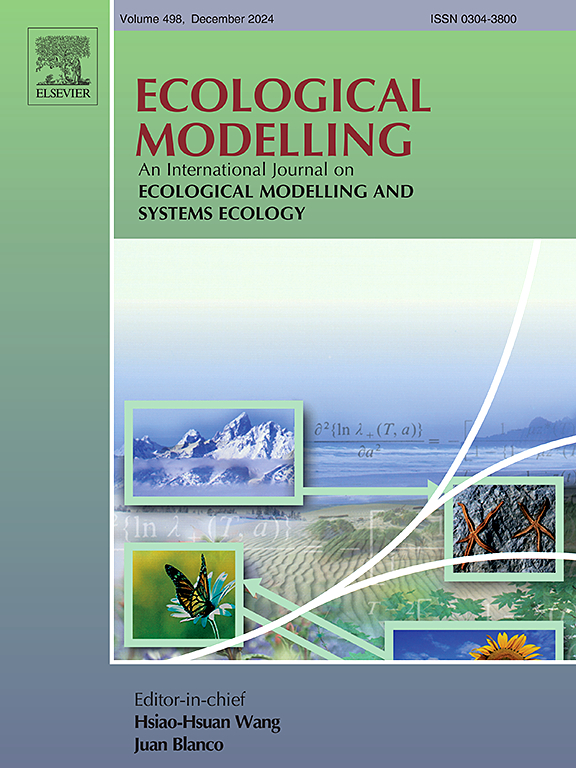Can inverse calibration help improving process-explicit species distribution models?
IF 2.6
3区 环境科学与生态学
Q2 ECOLOGY
引用次数: 0
Abstract
Process-explicit models (PEMs) are expected to provide reliable projections of species range shifts because they explicitly model the biological mechanisms that drive species responses to climate. However, their application is often limited by the need for diverse and detailed datasets, which are only available for a limited number of species. Inverse calibration has been identified as an avenue to help calibrate PEMs for many species, but it is still unclear whether it can provide biologically meaningful parameter estimates. Here, we investigated the potential of inverse calibration techniques to improve the accuracy of PEMs. We examined the discrepancies in parameter estimates obtained by classical and inverse calibration approaches. We evaluated two inverse calibration strategies: (i) calibrating all parameters simultaneously and (ii) focusing only on critical parameters. We assessed the realism of the obtained parameter estimates and the simulated processes by comparing them with measurements and observations across Europe. We show that when the entire model is calibrated at once, the model structure alone may not sufficiently constrain parameter estimation, leading to unrealistic parameter values. However, selective application of the inverse calibration approach – focusing on critical parameters – can improve model performance while still simulating realistic biological mechanisms.
逆校准能帮助改进过程显式物种分布模型吗?
显性过程模型(PEMs)被期望提供可靠的物种范围变化预测,因为它们明确地模拟了驱动物种对气候响应的生物机制。然而,它们的应用往往受到需要多样化和详细的数据集的限制,这些数据集只能用于有限数量的物种。逆校准已被确定为帮助校准许多物种的PEMs的途径,但仍不清楚它是否可以提供生物学上有意义的参数估计。在这里,我们研究了反向校准技术在提高等离子体测量精度方面的潜力。我们检查了经典和逆校准方法获得的参数估计的差异。我们评估了两种反向校准策略:(i)同时校准所有参数和(ii)仅关注关键参数。我们通过将获得的参数估计和模拟过程与整个欧洲的测量和观测结果进行比较,评估了它们的现实性。我们表明,当整个模型一次校准时,模型结构本身可能不足以约束参数估计,导致参数值不切实际。然而,选择性地应用反校准方法-专注于关键参数-可以提高模型性能,同时仍然模拟现实的生物机制。
本文章由计算机程序翻译,如有差异,请以英文原文为准。
求助全文
约1分钟内获得全文
求助全文
来源期刊

Ecological Modelling
环境科学-生态学
CiteScore
5.60
自引率
6.50%
发文量
259
审稿时长
69 days
期刊介绍:
The journal is concerned with the use of mathematical models and systems analysis for the description of ecological processes and for the sustainable management of resources. Human activity and well-being are dependent on and integrated with the functioning of ecosystems and the services they provide. We aim to understand these basic ecosystem functions using mathematical and conceptual modelling, systems analysis, thermodynamics, computer simulations, and ecological theory. This leads to a preference for process-based models embedded in theory with explicit causative agents as opposed to strictly statistical or correlative descriptions. These modelling methods can be applied to a wide spectrum of issues ranging from basic ecology to human ecology to socio-ecological systems. The journal welcomes research articles, short communications, review articles, letters to the editor, book reviews, and other communications. The journal also supports the activities of the [International Society of Ecological Modelling (ISEM)](http://www.isemna.org/).
 求助内容:
求助内容: 应助结果提醒方式:
应助结果提醒方式:


